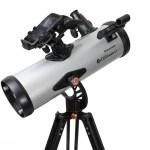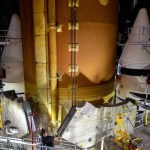Dominique Luchart's Blog, page 589
June 21, 2021
The best anti-Prime Day tech deals,

To take part in Amazon’s two-day Prime Day 2021 sales event, you need a Prime membership. That’s easy enough to sign up for, and the company even offers a 30-day free trial for first-time subscribers who don’t want to commit. But whether you’re anti-Amazon, or just want to mix up where you shop, there’s nothing but good news: plenty of retailers are offering competing deals to go up against Prime Day. Stores like Walmart and Target are responding with price cuts of their own, slashing prices on AirPods, Nintendo Switch games, and webcams, along with plenty of other tech.
Here, we’ve corralled all of the best anti-Prime Day deals in one place. Like our main guide to the best Prime Day deals, we’ll be adding to this list over the next day or two, highlighting the biggest discounts as soon as we find them.
 Photo by Chris Welch / The VergeThe best Prime Day deals at WalmartThe 32GB, last-gen Apple TV 4K is $99 at Walmart (usually $150), beating the best price we’ve seen on Apple’s popular streamer by $5.The Beats Solo Pro are $149 at Walmart (normally $300), slightly beating their best-ever sale price.Samsung’s S21 Plus 5G (128GB, AT&T) is $450 at Walmart (usually $850).Samsung’s S21 Plus 5G (128GB, Verizon) is $450 at Walmart (usually $1,050).Google’s Nest Mini (second-gen) is $35at Walmart (usually $50), a few dollars shy of the best price we’ve ever seen on the pint-sized, Google Assistant-enabled smart speaker.
The Legend of Zelda: Link’s Awakening
(Nintendo Switch) is $40 at Walmart (usually $60), matching the best price we’ve seen on the classic Nintendo remake.
Super Mario Odyssey
(Nintendo Switch) is $40 at Walmart (usually $50), matching the best sale price we’ve ever seen on Mario’s inventive platformer.
Luigi’s Mansion 3
(Nintendo Switch) is $40 at Walmart (usually $50), matching the best price to date.
Fire Emblem: Three Houses
(Nintendo Switch) is $40 at Walmart (usually $60), matching the best price we’ve seen on the well-received Switch title.
Photo by Chris Welch / The VergeThe best Prime Day deals at WalmartThe 32GB, last-gen Apple TV 4K is $99 at Walmart (usually $150), beating the best price we’ve seen on Apple’s popular streamer by $5.The Beats Solo Pro are $149 at Walmart (normally $300), slightly beating their best-ever sale price.Samsung’s S21 Plus 5G (128GB, AT&T) is $450 at Walmart (usually $850).Samsung’s S21 Plus 5G (128GB, Verizon) is $450 at Walmart (usually $1,050).Google’s Nest Mini (second-gen) is $35at Walmart (usually $50), a few dollars shy of the best price we’ve ever seen on the pint-sized, Google Assistant-enabled smart speaker.
The Legend of Zelda: Link’s Awakening
(Nintendo Switch) is $40 at Walmart (usually $60), matching the best price we’ve seen on the classic Nintendo remake.
Super Mario Odyssey
(Nintendo Switch) is $40 at Walmart (usually $50), matching the best sale price we’ve ever seen on Mario’s inventive platformer.
Luigi’s Mansion 3
(Nintendo Switch) is $40 at Walmart (usually $50), matching the best price to date.
Fire Emblem: Three Houses
(Nintendo Switch) is $40 at Walmart (usually $60), matching the best price we’ve seen on the well-received Switch title. Apple’s AirPods ProPhoto by Chris Welch / The VergeThe best Prime Day deals at TargetApple’s AirPods Pro are $190 at Target (usually $250), nearly matching the best price we’ve seen on Apple’s noise-canceling earbuds.Samsung’s Galaxy Tab A7 is $180 at Target (usually $230), matching the lowest price we’ve seen on the budget tablet in the past six months or so.Fujifilm’s Instax Mini 11 Instant Film Camera bundle is $70 at Target (usually $80), the first price drop the bundle has received.Logitech C920s Pro HD Webcam is $50 at Target (usually $60), the first notable discount we’ve seen on Logitech’s 1080p webcam.The Fitbit Charge 4 is $100 at Target (usually $130).The Roku Express 4K Plus is $30 at Target (usually $40), matching the best price we’ve seen on Roku’s 4K streaming device.The PowerBeats Pro are $170 at Target (usually $200) and come with a $25 Target gift card, matching their best-ever price.Assassin’s Creed Valhalla (PS4, Xbox Series X/S) is $23 at Target (usually $60), the steepest price drop we’ve seen on the latest entry in Assassin’s Creed saga.
Paper Mario: The Origami King
(Nintendo Switch) is $30 at Target (usually $43).
Pikmin 3 Deluxe
(Nintendo Switch) is $30 at Target (usually $60), easily the biggest price drop we’ve seen on the Switch remaster.
Mario + Rabbids Kingdom Battle
(Nintendo Switch) is $15 at Target (normally $47).
The Legend of Zelda: Link’s Awakening
(Nintendo Switch) is $40 at Target (usually $60), matching the best price we’ve seen on the classic Nintendo remake.
Apple’s AirPods ProPhoto by Chris Welch / The VergeThe best Prime Day deals at TargetApple’s AirPods Pro are $190 at Target (usually $250), nearly matching the best price we’ve seen on Apple’s noise-canceling earbuds.Samsung’s Galaxy Tab A7 is $180 at Target (usually $230), matching the lowest price we’ve seen on the budget tablet in the past six months or so.Fujifilm’s Instax Mini 11 Instant Film Camera bundle is $70 at Target (usually $80), the first price drop the bundle has received.Logitech C920s Pro HD Webcam is $50 at Target (usually $60), the first notable discount we’ve seen on Logitech’s 1080p webcam.The Fitbit Charge 4 is $100 at Target (usually $130).The Roku Express 4K Plus is $30 at Target (usually $40), matching the best price we’ve seen on Roku’s 4K streaming device.The PowerBeats Pro are $170 at Target (usually $200) and come with a $25 Target gift card, matching their best-ever price.Assassin’s Creed Valhalla (PS4, Xbox Series X/S) is $23 at Target (usually $60), the steepest price drop we’ve seen on the latest entry in Assassin’s Creed saga.
Paper Mario: The Origami King
(Nintendo Switch) is $30 at Target (usually $43).
Pikmin 3 Deluxe
(Nintendo Switch) is $30 at Target (usually $60), easily the biggest price drop we’ve seen on the Switch remaster.
Mario + Rabbids Kingdom Battle
(Nintendo Switch) is $15 at Target (normally $47).
The Legend of Zelda: Link’s Awakening
(Nintendo Switch) is $40 at Target (usually $60), matching the best price we’ve seen on the classic Nintendo remake. Super Mario Odyssey
Super Mario Odyssey
(Nintendo Switch) is $40 at Target (usually $50), matching the best sale price we’ve ever seen on Mario’s inventive platformer.
Luigi’s Mansion 3
(Nintendo Switch) is $40 at Target (usually $50), matching the best price to date.
Fire Emblem: Three Houses
(Nintendo Switch) is $40 at Target (usually $60), matching the best price we’ve seen on the well-received Switch title.It Takes Two (PS4 / PS5, Xbox One / Series X) is $30 at Target (usually $40), matching the best price we’ve seen on the hit cooperative title.Star Wars: Jedi Fallen Order (PS4, Xbox One) is $20 at Target (usually $40), matching its best-ever price.Star Wars Squadrons (PS4, Xbox One) is $20 at Target (usually $40), just shy of the best price we’ve seen on the Star Wars-themed dogfighting title.
Final Fantasy VII: Remake
(PS4) is $40 at Target (usually $50), nearly matching its best price ever.
Monster Hunter Rise
(Nintendo Switch) is $50 at Target (normally $60), matching the lowest price we’ve seen on the most recent Monster Hunter game.
Super Mario Odyssey
Super Mario Odyssey
(Nintendo Switch) is $40 at Target (usually $50), matching the best sale price we’ve ever seen on Mario’s inventive platformer.
Luigi’s Mansion 3
(Nintendo Switch) is $40 at Target (usually $50), matching the best price to date.
Fire Emblem: Three Houses
(Nintendo Switch) is $40 at Target (usually $60), matching the best price we’ve seen on the well-received Switch title.It Takes Two (PS4 / PS5, Xbox One / Series X) is $30 at Target (usually $40), matching the best price we’ve seen on the hit cooperative title.Star Wars: Jedi Fallen Order (PS4, Xbox One) is $20 at Target (usually $40), matching its best-ever price.Star Wars Squadrons (PS4, Xbox One) is $20 at Target (usually $40), just shy of the best price we’ve seen on the Star Wars-themed dogfighting title.
Final Fantasy VII: Remake
(PS4) is $40 at Target (usually $50), nearly matching its best price ever.
Monster Hunter Rise
(Nintendo Switch) is $50 at Target (normally $60), matching the lowest price we’ve seen on the most recent Monster Hunter game.The post The best anti-Prime Day tech deals, appeared first on NEWDAWN Blog.
The Verge’s Guide to Amazon Prime Day 2021,

Illustration by Alex Castro / The Verge
Amazon Prime Day 2021 is here. It’s the annual two-day mega sale when Prime members get exclusive access to some of the year’s best deals on everything, including technology that rarely sees a discount. After getting delayed to October last year due to the pandemic, this year’s Prime Day sales are back to their regular summer slot, taking place today, June 21st, and tomorrow, June 22nd.
Instead of showing you every slight price cut under the sun, we’re collecting only the best deals on products that we think you’ll love. From video games and 4K TVs to laptops and headphones, you’ll be able to get a big haul for less if you’re a Prime member. If you’re fast enough on the draw to get these deals, you might be able to check off quite a few items on your (and your family’s) tech wishlist months ahead of the holiday rush.
Start hereThe post The Verge’s Guide to Amazon Prime Day 2021, appeared first on NEWDAWN Blog.
The best deals on Celestron telescopes and binoculars for Prime Day, ,

Celestron, alongside Meade Instruments, Orion, Vixen and Sky-Watcher, is one of the most popular telescope companies around with options that suit all budgets. It’s likely that some Celestron telescopes to be on sale for big discounts during Amazon Prime Day, which runs through June 21-22 this year.
To mark Prime Day, we’ll have a list of the biggest Amazon deals on Celestron telescopes on top of our ongoing sales below, where we’ve pulled together the best Celestron telescope deals available right now and checked for the cheapest Celestron telescope prices from reputable online retailers.
Amazon Prime Day 2021: The best space deals to watch
If you’re looking to buy a new Celestron telescope but aren’t sure what you should be looking for yet, then you can start with our guide to the best telescopes or, if you have a specific need, then check out our guides for the best beginner telescope or best kids telescope. If, on the other hand, you’re looking for something more compact and are not ready to commit to buying a telescope just yet, check out our best binoculars guides as well. We’ve included some Celestron binocular deals in this list, too.
If you already have an idea of which telescope is best for you, but just want the best prices right now, then read on for a selection of the very best Celestron deals, and which products we recommend for under $100, under $500 and under $1000.
Amazon Prime Day Celestron DealsWe’ll be adding the latest Amazon Prime Day deals for Celestron telescopes and binoculars here during Amazon’s Prime Day event on June 21-22.
[image error]
Celestron AstroMaster 130EQ Newtonian Telescope: $279.95 now $195.99 at Amazon
Save 30%: This Celestron reflector is a powerful telescope for stargazing beginners and features a 130mm objective lens, 2 eyepieces (at 20 mm and 10 mm), a travel tripod that’s vital for camping trips to dark skies and the ever-useful StarPointer red dot finderscope that you’ll find on other Celestron instruments. It also includes a free download of Starry Night, the premiere astronomy software to help you find out what to see in the night sky. A 2-year warranty rounds out the deal for added buyer security. View Deal
Today’s best non-Prime Day Celestron telescope and binocular dealsSale now on: Today’s best Celestron telescope holiday season deals
Celestron 21024 FirstScope…
Celestron 21024…Celestron 21024 FirstScope Telescope
$59.95
at Amazon
CELESTRON PowerSeeker 50AZ…
CELESTRON…CELESTRON PowerSeeker 50AZ Astronomical Telescope 50mm Aperture Multi-layer Coating Foldable Portable Refractor Telescope for Beginners Children Outdoor
$126.11
at Tomtop WW
Celestron StarSense Explorer…
Celestron…Celestron StarSense Explorer DX 130AZ 130mm f/5 AZ Reflector Telescope
$399.95
at BHPhoto
Which Celestron telescope should you buy?There is a wide range of Celestron telescopes to choose from. There’s the basic Celestron FirstScope 76 which costs less than $50 to advanced astrophotography telescopes like the $14,000 Celestron 36 cm RASA Rowe-Ackermann Schmidt Astrograph, with every price point in between covered.
Starting at the lower end of the scale, and if your budget is restricted to less than $50, we recommend investing in binoculars over cheaper tabletop telescopes to get more optical bang for your buck. If binoculars are the right choice for you and you’re able to expand your budget to around $70, then the Celestron SkyMaster 15×70 binoculars are a worthy investment. Meanwhile, the Celestron PowerSeeker 60AZ is suitable for beginners still wishing to purchase a telescope with a budget limited to roughly $50 and, while the Celestron FirstScope 76 boasts a slightly larger aperture for picking up night-sky targets, its small tabletop design can be awkward to use for adults. With this in mind, and its overall optical performance, we recommend this instrument for children and families with a casual interest in skywatching.
Sale now on: Today’s best Celestron binocular holiday season deals
Celestron – SkyMaster Giant…
Celestron -…Celestron – SkyMaster Giant 15×70 Binoculars – Top Rated Astronomy Binoculars – Binoculars for Stargazing and Long Distance Viewing – Includes Tripod Adapter and Case
$94.79
at Amazon
Celestron UpClose G2 10-30×50…
Celestron UpClose…Celestron UpClose G2 10-30×50 Zoom Binoculars, Clam Pack 71261
$99.49
at Amazon
Celestron SkyMaster Giant…
Celestron…Celestron SkyMaster Giant 15×70 Binoculars with Tripod Adapter with Basic Smartphone Adapter 1.25″
$112.78
at Amazon
Celestron 15×70 SkyMaster Pro…
Celestron 15×70…Celestron 15×70 SkyMaster Pro Binoculars for Astronomy
$207.11
at Amazon
For a major step up in quality and what you’ll be able to view more closely in the night sky we recommend the Celestron AstroMaster 130 EQ. Find a good Celestron deal and you’ll be able to purchase this telescope for less than $300. That’s a significantly bigger investment, but with it, you’ll be able to achieve clearer and further sights, including magnified views of the rings of Saturn and some of Jupiter’s moons.
If you’re entering hobbyist territory with your skywatching then you’ll want something more advanced. For around $800 the Celestron NexStar 6SE is a computerized telescope, equipped with a fully-automated GoTo mount and SkyAlign technology. This revolutionary instrument makes finding objects in the night sky simple and at a quick touch of a button, affording observers the chance to spend more time observing instead of navigating. With a decent-sized objective lens of 6 inches, the Celestron NexStar 6SE is a good telescope for experienced stargazers and serious beginners alike — an added bonus is that this instrument is difficult to outgrow given its capabilities, with the only added cost being extra accessories like eyepieces and filters to make the most of its optical system.
Those are our top recommendations and we’ve included them in our Celestron deals finder below. Our price checking technology looks for the best Celestron deals and prices every day from reputable retailers, so you don’t have to scour the internet to get a discount on your next Celestron telescope or binoculars.
active filtersClear All
Celestron StarSense Explorer DX 130AZ Smartphone App-Enabled Telescope
?
Celestron 76 mm Firstscope
?
Celestron PowerSeeker 50 AZ Refractor Telescope
?
Celestron 21036 Powerseeker 70az Telescope
?
Celestron Powerseeker 127EQ
?
Celestron PowerSeeker 80AZS Telescope
?
Celestron StarSense Explorer LT 114AZ 114mm f/9 AZ Reflector Telescope
?
Celestron 31045 AstroMaster 130EQ Reflector Telescope
?
Celestron NexStar 6SE
?
Celestron Nexstar 5SE
?
Celestron NexStar 4SE
?
Celestron 76 mm PowerSeeker Reflector
?
Celestron AstroMaster 102AZ Telescope
?
Celestron C6-S GT XLT Advanced Series 6 Schmidt-Cassegrain Telescope
?
Celestron SkyProdigy 130
?
Celestron AstroFi 102 Telescope
?
Celestron Omni XLT 102 Refractor Telescope
?
Celestron NexStar Evolution 6 Schmidt-Cassegrain Telescope
?
Celestron AstroFi 90 Wi-Fi Refractor
?
Celestron NPF TravelScope60
?
Celestron 8″ Rowe-Ackermann Schmidt Astrograph
?
Celestron Travel Scope 50
?
StarSense Explorer DX 102AZ Refractor Telescope
?
Celestron Advanced VX 8 Edge HD
?
CELESTRON Astromaster 60LT Refractor Telescope
?
Celestron NexStar 90 SLT
?
Celestron Travel Scope 80 Telescope with Smartphone Adapter
?
Celestron National Parks Foundation ExploraScope 114
?
Celestron C6-S GT XLT Telescope
?
Celestron AstroMaster 114EQ Newtonian Telescope
?
Celestron Travel scope 70 Telescope
?
Celestron AstroMaster 70AZ telescope
?
Celestron Travel Scope 50
?
Celestron Astromaster 80AZ
?
Celestron 76mm Firstscope Apollo 11 Edition
?
Celestron NexStar Evolution 925 Computerised Telescope
?
Celestron 114 LCM telescope
?
Celestron Omni XLT 150 telescope
?
Celestron Omni XLT 102 Refractor Telescope
?
Celestron RASA 8 / AVX
?
Celestron 31145 NexStar 130 SLT Series Newtonian Reflector Telescope
?
Celestron NexStar 127SLT Mak Computerized Telescope
?
CELESTRON NEXSTAR EVOLUTION 8 CATADIOPTRIC TELESCOPE
?
Celestron NexStar 8SE
?
Celestron 15-35×70 SkyMaster Zoom Binocular
?
Celestron Inspire 100AZ
?
Celestron Inspire 80AZ Refractor
?
Celestron Inspire 70AZ
?
Celestron NPF ExploraScope
?
Celestron CPC 800 GPS (XLT) Computerised Telescope
?
Celestron 22203 AstroFi 130 Wireless Reflecting Telescope
?
Celestron Advanced VX 9.25″ f/10 Telescope
?
Celestron Ambassador Executive Telescope
?
Celestron 10×42 Nature Binocular
?
Celestron Nature DX 8×32
?
Celestron SkyMaster 15×70 Binoculars
?
Celestron 25×70 SkyMaster binocular
?
Celestron SkyMaster DX 8×56 Binoculars
?
Celestron 10×50 Ultima Binocular
?
Celestron Nature DX 10×56
?
StarSense Explorer LT 80AZ Refractor Telescope
?
Celestron 10×50 Nature DX ED Roof Prism Binocular
?
Celestron Outland X 10×50
?
Celestron 8×32 TrailSeeker Binoculars
?
Celestron 8×42 Regal Binocular
?
Celestron 18-40×78 SkyMaster Zoom Binocular
?
Celestron 18-40×80 SkyMaster Zoom Binocular
?
Celestron UpClose G2 10-30×50 Zoom Porro Binocular
?
Celestron 8×32 TrailSeeker Binoculars
?
Celestron 10×42 Ultima Binoculars
?
Celestron 8×42 Trailseeker Binoculars
?
Celestron 7×50 Oceana Binocular
?
Celestron Tripod Adapter
?
Celestron 10×42 TrailSeeker Binoculars
?
Celestron SkyMaster Pro 20×80
?
Celestron 12×50 Nature DX ED Roof Prism Binocular
?
Celestron 8×42 Ultima Binoculars
?
Celestron Stereo Binocular Viewer
?
Celestron SkyMaster 25×100
?
Celestron EclipSmart 10×25 Solar Binocular
?
Celestron 71198 Cometron 7×50 Binoculars (Black)
?
[image error]Back to Telescopes
CELESTRON
Celestron
StarSense
Copper
Orange
Silver
Refurbished
Any Price
Showing 10 of 77 deals
Filters?

Celestron 21036 Powerseeker 70az
(Black)
Our Review
1
Celestron – PowerSeeker 50AZ…
Amazon
$49.95
Celestron 76 mm Firstscope
(Black)
Our Review
2
Celestron 21024 FirstScope…
Amazon
$59.95
Celestron Powerseeker 127EQ
(Black)
Our Review
3
Celestron – PowerSeeker 127EQ…
Amazon
$189
$176.31
Celestron 31045 AstroMaster 130EQ
(Blue)
Our Review
4
Celestron – AstroMaster 130EQ…
Amazon
$280.89
Low Stock
Celestron StarSense Explorer LT 114AZ
Our Review
5
Celestron – StarSense…
Amazon
$349.05
Celestron Omni XLT 102 Refractor
Our Review
7
Celestron Omni XLT 102 102mm…
BHPhoto
$549.95
Celestron Nexstar 5SE
Our Review
8
Celestron – NexStar 5SE…
Amazon
Low Stock
Celestron AstroFi 102 Telescope
(Black)
Our Review
9
Celestron Astro Fi 102 Wi-Fi…
Amazon
Celestron NexStar 6SE
Our Review
10
Celestron – NexStar 6SE…
Amazon
$1,313.71
Load more deals
Join our Space Forums to keep talking space on the latest missions, night sky and more! And if you have a news tip, correction or comment, let us know at: community@space.com.
The post The best deals on Celestron telescopes and binoculars for Prime Day, , appeared first on NEWDAWN Blog.
Super Mario World receives the widescreen emulation mod it deserves,

Some purists might sneer at the idea of playing retro games in anything other than their original 4:3 aspect ratio. But for anyone else, a new widescreen hack for Super Mario World means you can now enjoy the 1990 game on modern displays, without having to put up with black bars or a weirdly stretched image.
Super Mario World Widescreen is the work of ROM hacker Vitor Vilela, and works by modifying the original game’s ROM when played through the bsnes_hd emulator. It means the game’s original 256×224 internal screen size can be adjusted to 352×224 to give it the correct aspect ratio for a 16:9 display. As well as 16:9, the patch also supports 16:10 resolutions, and ultrawide 21:9 support is planned for the future.
NEW RELEASE: Super Mario World Widescreen (SNES) is now available for download! Explore the new expanded adventure, natively enhanced to work with modern screens. The true 2021 gaming experience mixed with the wonderful 1990 gaming golden age!
Download: https://t.co/UugJXT4Fvh pic.twitter.com/BDTMIECQhP
— Vitor Vilela (@HackerVilela)
Instructions for how to get the patch set up can be found over on the project’s GitHub page, but note that you’re going to have to find your own Super Mario World ROM as part of the process. We’d love it if there was an official way to pay for Nintendo-approved ROMs, but for now you’re going to have to get creative, especially since Nintendo has aggressively gone after sites that distribute ROMs of its games.
Although this hack just covers Super Mario World, the hope is to develop a standard that can eventually be applied across all SNES games. Another developer, ocesse, is hard at work on a similar patch for Super Metroid, and Vilela told RetroRGB in March that once both patches are complete “we will likely have a solid standard which future ROM modders will be able to apply to any SNES game. That’s our objective.”
The post Super Mario World receives the widescreen emulation mod it deserves, appeared first on NEWDAWN Blog.
NASA’s new moon rocket, the Space Launch System, takes shape in giant hangar, ,

[image error]
A view of the core stage positioned in between its two solid rocket boosters, that will give the heavy lifter an extra kick on liftoff. (Image credit: NASA)CAPE CANAVERAL, Fla. — NASA is one step closer to the moon. The space agency’s next megarocket, the Space Launch System (SLS) is coming together ahead of its first planned launch later this year.
The behemoth’s core stage arrived at NASA’s Kennedy Space Center, via barge on April 27, before rolling into the massive Vehicle Assembly Building (VAB), its home until launch.
The agency celebrated the milestone, which marked the first time that all of the rocket’s components were in the same place and the first time a rocket bound for deep space was in the VAB since the end of the Apollo era.
[image error]
A view of two NASA moon rockets: Apollo’s Saturn V booster (left) and the Artemis 1 Space Launch System core booster (right). (Image credit: NASA)After its arrival, the core stage spent the next few weeks in the transfer aisle of the VAB before it was hoisted on top of the mobile launch platform to join the two solid rocket boosters that are already stacked in High Bay 3.
“This is the first time that the complete flight unit has come together,” Sean Arrieta of NASA’s Exploration Ground Systems told Space.com in a recent interview. “We’re all really excited.”
This summer, the agency’s new Orion spacecraft will be mated with the SLS and prepared to blast off on an uncrewed test flight around the moon later this year as part of the Artemis 1 mission. If all goes as planned, agency officials said that the flight could take place as early as November.
The core stage is the backbone of the rocket, which stands 212 feet (65 meters) tall. Workers used a 325-ton crane to hoist the core stage into the air, transferring it to a nearby high bay. From there, it was stacked on top of its mobile launch platform, and in between two 177-foot-tall (54 m) solid rocket boosters.
Built by Northrop Grumman, the boosters are longer versions of the solid rocket motors that once powered the agency’s fleet of space shuttles. In fact, each of the five segments flew on multiple space shuttle missions before being refurbished for the SLS program.
[image error]
NASA’s Space Launch System rocket is powered by four RS-25 engines that were built by Aerojet Rocketdyne and refurbished after the shuttle program ended. (Image credit: NASA)The successful stacking of the core stage is just the start of a process to fully assemble the rocket ahead of launch. If all goes as planned, we could see a complete launch system, with Orion spacecraft perched on top, by August.
NASA would be on track to move the 322-foot-tall (98-meter) rocket to pad 39B for preflight testing in September or October. At that time, the crews would run through launch countdown procedures and mock fueling.
Related: NASA fires up 1st SLS megarocket for moon flights in a critical engine test
Four RS-25 engines — the same engine that powered the space shuttle — will power SLS, along with an added boost from the twin solid rocket boosters, generating more than 8 million pounds of thrust. NASA puts the engines, which were built by Aerojet Rocketdyne, through their paces earlier this year as part of a series of green run tests.
The testing culminated with a hot fire test at NASA’s Stennis Space Center in Mississippi, on March 18, a repeat of an identical test that ended prematurely back in January. Simulating a real launch, the engines were fired up and burned for more than eight minutes while firmly affixed to a test stand.
[image error]
The Space Launch System core booster was stacked on top of its mobile launch platform on June 13, ahead of an estimated November launch. (Image credit: NASA)That was the last major hurdle the craft had to clear ahead of the main event: launch day. NASA is hoping to launch the SLS and Orion crew capsule on an unpiloted test flight around the moon as soon as late November.
The mission, known as Artemis 1, will last more than three weeks and pave the way for Artemis 2, which will carry a four-person crew around the moon in 2023.
Beyond that, the agency plans to start landing astronauts near the lunar south pole with the help of commercially developed lunar landers. In April, NASA selected the first of those landers — a version of SpaceX’s Starship — to land the first Artemis crew on the moon.
In Photos: NASA’s Kennedy Space Center renovates Launch Pad 39B for Orion
The rest of the assembly should go fairly quickly, according to NASA, with a November launch on the horizon. The agency says the next steps are to install the launch vehicle stage adaptor (LVSA), followed by the upper stage, known as the Interim Cryogenic Propulsion Stage (ICPS), which is a hydrogen-fueled upper stage.
After that, the crews will install a structure to simulate the weight of Orion so that more testing can be done before the actual Orion is installed at the end of the summer.
“We’re excited to finally have all the hardware here in Florida,” Arietta told Space.com after the core stage’s arrival. “We’ve had some challenges along the way, but we are confident we can launch this year.”
Follow Amy Thompson on Twitter @astrogingersnap. Follow us on Twitter @Spacedotcom or Facebook.
The post NASA’s new moon rocket, the Space Launch System, takes shape in giant hangar, , appeared first on NEWDAWN Blog.
Record breaker: Scientists spot earliest known supermassive black hole ‘storm’, ,

A massive maelstrom that raged in the universe’s youth could help scientists better understand how galaxies and their central black holes interact.
Most, if not all, galaxies harbor a supermassive black hole at their core. Our own Milky Way has one, for example — a behemoth known as Sagittarius A*, which is about as massive as 4.3 million suns.
Galaxies and their supermassive black holes have a tight relationship. The objects seem to evolve together, perhaps through the action of “winds” that the central black holes generate as they gobble up dust and gas. The black holes’ gravity accelerates this infalling stuff to incredibly high speeds, causing it to release energy that can blow other material outward.
Related: Black holes of the universe (images)
“The question is, when did galactic winds come into existence in the universe?” Takuma Izumi, a researcher at the National Astronomical Observatory of Japan (NAOJ), said in a statement. “This is an important question, because it is related to an important problem in astronomy: How did galaxies and supermassive black holes co-evolve?”
Takumi led a team of researchers that dug into these questions. Using the NAOJ’s Subaru Telescope in Hawaii, the scientists found more than 100 galaxy-supermassive black hole duos that lie at least 13 billion light-years from Earth, meaning they existed more than 13 billion years ago. (It’s taken that long for their light to reach Earth.) The universe was young then, relatively speaking; the Big Bang occurred about 13.82 billion years ago.
Next, the team studied the motion of gas within these galaxies using the Atacama Large Millimeter/submillimeter Array (ALMA), a network of powerful radio telescopes in Chile. The ALMA data revealed that a galaxy called HSC J124353.93+010038.5 features a galactic wind traveling at about 1.1 million mph (1.8 kph) — fast enough to propel lots of material outward and hinder star-formation activity.
HSC J124353.93+010038.5 lies 13.1 billion light-years from Earth. And that makes it a record breaker: The earliest known galaxy with a sizable wind had been an object about 13 billion light-years away, the researchers said.
The new results, which were published online in The Astrophysical Journal on June 14, shed further light on the very tight, and very old, bond between galaxies and their central black holes.
“Our observations support recent high-precision computer simulations which have predicted that coevolutionary relationships were in place even at about 13 billion years ago,” Izumi said. “We are planning to observe a large number of such objects in the future, and hope to clarify whether or not the primordial coevolution seen in this object is an accurate picture of the general universe at that time.”
Mike Wall is the author of “ Out There ” (Grand Central Publishing, 2018; illustrated by Karl Tate), a book about the search for alien life. Follow him on Twitter @michaeldwall. Follow us on Twitter @Spacedotcom or Facebook.
Join our Space Forums to keep talking space on the latest missions, night sky and more! And if you have a news tip, correction or comment, let us know at: community@space.com.
The post Record breaker: Scientists spot earliest known supermassive black hole ‘storm’, , appeared first on NEWDAWN Blog.
Earth’s fifth ocean just confirmed, ,

The Earth has finally attained popular recognition for its fifth ocean, with a decision by the National Geographic Society to add the Southern Ocean around Antarctica to the four it recognizes already: the Atlantic, Pacific, Indian and Arctic oceans.
Although the designation of the frigid waters around the icy southern continent as a separate ocean has kicked around for almost 100 years and is widely used by scientists, until now it has not had popular backing.
But on June 8 — World Oceans Day — the society announced it would henceforth be labeling the Southern Ocean as the fifth ocean on its maps of our planet.
Related: See photos of Antarctica: The ice-covered bottom of the world
“The Southern Ocean has long been recognized by scientists, but because there was never agreement internationally, we never officially recognized it,” the society’s official geographer Alex Tait told the . “It’s sort of geographic nerdiness in some ways.”
One of the biggest impacts would be on education, he said: “Students learn information about the ocean world through what oceans you’re studying. If you don’t include the Southern Ocean, then you don’t learn the specifics of it and how important it is.”
Antarctic current[image error]
The Antarctic Circumpolar Current (ACC), which travels from west to east, defines the boundaries of the Southern Ocean. (Image credit: Shutterstock)National Geographic began making maps in 1915, but the society had only formally recognized just four oceans, which they defined by the continents that bordered them.
In contrast, the Southern Ocean is defined not by the continents that surround it, but by the Antarctic Circumpolar Current (ACC) that flows from west to east. Scientists think the ACC was created 34 million years ago when the continent of Antarctica separated from South America, allowing water to flow unimpeded around the “bottom” of the world.
Today, the ACC flows through all waters that surround Antarctica until about 60 degrees south, except for the Drake Passage and the Scotia Sea, which are both roughly between South America’s Cape Horn and the Antarctic Peninsula.
The waters of the ACC — and therefore most of the Southern Ocean — are colder and slightly less salty than the ocean waters to the north.
The ACC pulls in water from the Atlantic, Pacific and Indian oceans to help drive a global “conveyor belt” that carries heat around the planet, while the cold dense water of the ACC sinks and helps to store carbon in the deep ocean. And thousands of marine species live only within the ACC, according to National Geographic.
Antarctic watersExactly what constitutes an ocean is not agreed, other than that they are the largest bodies of water. A common definition split the global ocean into four or five parts, according to the continents that surrounded them.
Nevertheless, the term “Southern Ocean” had been used to describe the waters at the bottom of the world since they were first seen by the Spanish explorer Vasco Nunez de Balboa early in the 16th century, and its use continued as oceans became vital routes for international communications and trade in the centuries that followed.
By the 19th century, many maritime nations had established “hydrographic” authorities to publish information on the oceans for their navies and merchant vessels, and the term “Southern Ocean” appeared in the early publications of the International Hydrographic Organization (IHO) that they formed in 1921.
But according to the book “Southern Ocean: Oceanographers Perspective” (Ice Press, 2015), the IHO rescinded the designation in 1953: “The majority of opinions received … are to the effect that there exists no real justification for applying the term Ocean to this body of water,” the IHO wrote in the guidelines it published that year.
RELATED CONTENT
—Under the sea: 50 breathtaking images from our oceans
—Time-lapse images of retreating glaciers
—50 amazing facts about Antarctica
Scientists didn’t agree, however, and the term has been increasingly used, as the importance and uniqueness of the Southern Ocean became more clear. The U.S. Board on Geographic Names started using it in 1999, and the National Oceanic and Atmospheric Administration (NOAA) officially began using it this year.
The original “ocean” on Earth was, in fact, a river — named by the ancient Greeks after the titan Oceanus, a river god who was the son of Uranus and Gaia and the brother and husband of Tethys, the goddess of the primal waters that nourished the Earth. .
This river “Ocean” was originally thought to encircle the world, which the early Greeks imagined ended somewhere just west of Europe and east of Asia. Eventually, the term would become used to describe the different parts of the global ocean.
The related term “Seven Seas,” meanwhile, is much older than many modern oceans. No one knows where the concept originated, but the term appears in the ancient writings of the Greeks, Romans, Arabs, Hindus, Persians and Chinese, although it often described entirely different seas — some of them mythical — for different people.
According to the World Atlas website, the Seven Seas today are considered the seven largest oceanic bodies of water: the Arctic, North Atlantic, South Atlantic, Indian, North Pacific, South Pacific, and Southern or Antarctic Ocean
Originally published on Live Science.
Amazon Prime Day Deals
Reduced Price
Apple AirPods Pro
Apple AirPods Pro
Amazon
$249
$189.99
Low Stock
Samsung Electronics Samsung…
Samsung Galaxy S21
Amazon
$797.55
New Apple iPhone 12 (64GB,…
Apple iPhone 12
Amazon
Samsung Galaxy Note 20 Ultra…
Samsung Galaxy Note 20 Ultra
Amazon
$1,024.50
OnePlus 9 Pro Morning Mist,…
OnePlus 9 Pro
Amazon
$1,069.99
New Apple iPhone 12 Pro Max…
Apple iPhone 12 Pro Max
Amazon
$1,099
SAMSUNG Galaxy S21 Ultra 5G…
Samsung Galaxy S21 Ultra
Amazon
$1,199.99
Reduced Price
Roku Premiere | HD/4K/HDR…
Roku Streaming Stick Plus
Amazon
$39
$33.50
Reduced Price
New Apple Watch Series 6…
Apple Watch 6
Amazon
Reduced Price
2020 Apple MacBook Air with…
Apple Macbook Air (M1 2020)
Amazon
We check over 250 million products every day for the best prices
The post Earth’s fifth ocean just confirmed, , appeared first on NEWDAWN Blog.
Facebook’s Clubhouse competitor starts rolling out in the US today,

Facebook’s Clubhouse competitor, Live Audio Rooms, is making its way stateside. The company announced today that some US-based public figures, as well as certain groups, can start hosting rooms through the main Facebook iOS app. (People can join, however, from both iOS and Android.) Anyone can be invited up as a speaker with up to 50 people able to speak at once. There’s no cap on the number of listeners allowed in — a major shot at Clubhouse, which imposes room size limitations.
It’s also introducing other nifty features, like notifications when your friends or followers join a room, as well as live captions. There will be a “raise a hand” button to request to join the conversation, and reactions will be available to to interact throughout the chat. Twitter Spaces, Twitter’s live audio feature, includes captions, but Clubhouse still does not.
Within groups, admins can control who’s allowed to create a room: moderators, group members, or other admins. Public group chats will be accessible both in and outside the group, but private group chats will be restricted to members. Additionally, hosts can also select a nonprofit or fundraiser to support during their conversation with a button to directly donate showing up on the chat. Again, this feels like a feature directly built to address a key Clubhouse use case and make it frictionless. (Many Clubhouse creators have hosted fundraisers on the app but have to direct people to outside links in order to facilitate donations.)
 Facebook
FacebookAdditionally, Facebook is making podcasts available on the platform, confirming earlier Verge reporting. People will be able to listen to podcasts through either a mini-player or a full-screen player with various playback controls, including the ability to listen while the screen is off. They’ll be able to find shows on specific podcast creators’ Pages, as well as in the News Feed, and they can react to, comment, bookmark, and share their favorites. The Facebook team says it plans to roll out automatic captioning later this summer, as well as a clips feature where listeners can create and share their favorite clips.
All these features come just days after Spotify debuted its own live audio app, Greenroom; three months since Stage Channels came to Discord; four months after Reddit Talk; roughly seven months after Twitter launched Spaces; and about 15 months after Clubhouse first launched. LinkedIn and Slack are, reportedly, working on their own versions of an audio product, even as downloads of and buzz around Clubhouse itself have waned considerably.
 Facebook
FacebookUnlike Clubhouse, which drew in early listeners by giving them auditory access to Silicon Valley hot shots, Facebook is hoping to cast a broader net of influencers with Live Audio Rooms. Among the named public figures who will have access to the feature on launch will be musicians (TOKiMONSTA, D Smoke, Kehlani); media figures (Joe Budden, DeRay Mckesson); and athletes (Russell Wilson, Omareloff). Joe Budden will also distribute his podcast through Facebook.
Audio rooms may or may not be a feature with real staying power, but Facebook seems intent on investing broadly in the space.
The post Facebook’s Clubhouse competitor starts rolling out in the US today, appeared first on NEWDAWN Blog.
Cyberpunk 2077 returns to PlayStation Store with a big PS4 warning,

As expected, Cyberpunk 2077 has returned to Sony’s PlayStation Store today, more than six months after it was removed. The game has returned with a big warning for PS4 owners, though. “Users may continue to experience some performance issues with the PS4 edition while we continue to improve stability across all platforms,” admits CD Projekt Red. “The PS4 Pro and PS5 versions of the game will provide the best experience on PlayStation.”
Sony’s listing for Cyberpunk 2077 has a similar warning, and it goes a step further to try and dissuade PS4 owners from purchasing the game. “Purchase for use on PS4 systems is not recommended,” says Sony’s listing. “For the best Cyberpunk experience on PlayStation, play on PS4 Pro and PS5 systems.”
Users may continue to experience some performance issues with the PS4 edition while we continue to improve stability across all platforms. The PS4 Pro and PS5 versions of the game will provide the best experience on PlayStation.
— Cyberpunk 2077 (@CyberpunkGame)
Cyberpunk 2077 originally debuted in December with severe technical problems on last-generation Xbox One and PlayStation 4 consoles. There were multiple bugs and glitches across all platforms, but some of the most severe issues were found on base Xbox One and PS4. Microsoft added a warning label on its own Xbox store, while Sony pulled Cyberpunk 2077 from its store entirely after just a week. You could still buy the physical disc version for PS4, but the missing digital version could have slowed down sales across Xbox, PC, and PlayStation.
CD Projekt Red has been gradually patching many of the early Cyberpunk 2077 issues, but it’s clear there’s still work to be done on the Xbox One and PS4 versions. A free next-gen upgrade will be available for Cyberpunk 2077 in the second half of 2021, with more fixes planned throughout the year.
The post Cyberpunk 2077 returns to PlayStation Store with a big PS4 warning, appeared first on NEWDAWN Blog.
This Star Wars Baby Yoda Amazon Echo Dot Stand and Bundle is 35% off for Prime Day, ,

If Baby Yoda (aka Grogu the Child) from the “Star Wars” TV series “The Mandalorian” stole your heart, you can grab a version for your very own for Amazon Prime Day. Right now you can save 35% on a Amazon Echo Dot device complete with Baby Yoda ears thanks to its Mandalorian The Child Stand.
The 3rd Gen. Echo Dot with Mandalorian The Child Stand is normally $64.94, but for Prime Day you can save $23 to grab it at $41.94. The bundle includes both the Echo Dot and its Mandalorian stand in several colors (Charcoal, Heather Grey, Plum or Sandstone). It’s a speaker, Alexa connection and could be the perfect present for the Jedi master in your life, or a galactic gift to give yourself. We’re not sure how long this deal will last, but will update it here if stock runs out.
Amazon Prime Day 2021: The best space deals to watch
The best Star Wars Prime Day deals and gifts for 2021
Echo Dot (3rd Gen) Plum with Mandalorian The Child Stand: $64.94 $41.94 at Amazon
Asking Alexa for help or playing music was never so adorable as it is with tis Mandalorian-themed Echo Dot bundle for Prime Day. View Deal
The Child, more commonly known as baby Yoda, is a fan favourite among Star Wars fans all over the world and you can now be reminded of it every time you use your Echo device. The Echo dot is Amazon’s most popular smart speaker and most compact, making the stand the perfect accessory for it.
The smart speaker will allow you to voice control your music: streaming from popular platforms like Amazon Music, Apple Music, Spotify, and others. You can also get news updates on demand from Alexa (the built in voice) as well as play games, track your fitness and more!
Follow us on Twitter @Spacedotcom and on Facebook.
Join our Space Forums to keep talking space on the latest missions, night sky and more! And if you have a news tip, correction or comment, let us know at: community@space.com.
The post This Star Wars Baby Yoda Amazon Echo Dot Stand and Bundle is 35% off for Prime Day, , appeared first on NEWDAWN Blog.



